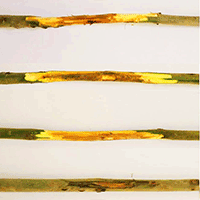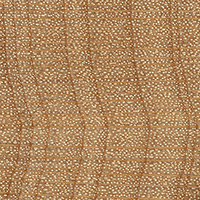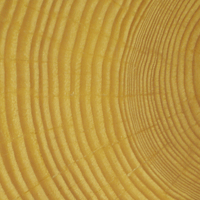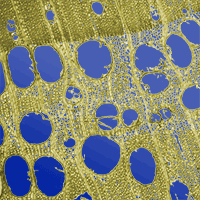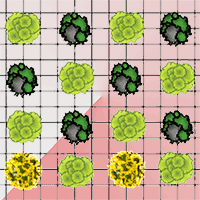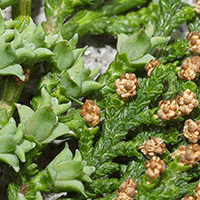With ongoing climate change, episodes of severe flooding are predicted to become more frequent despite a general trend towards increasing summer drought. We investigated how wood growth of adult trees of two species characteristic of floodplain forests in Central Germany (Fraxinus excelsior L., Quercus robur L.) and two less-typical species (Acer pseudoplatanus L., Carpinus betulus L.) responded to both maximum stream water level and climate, with a special focus on the effects of the extraordinary flood of the Saale River in June 2013 and the extreme drought in summer 1976. Tree-ring widths were measured on wood cores, and standardized ARSTAN tree-ring chronologies were produced. Using variance partitioning as well as linear mixed-effects models, we compared the effects of monthly values for maximum water level, temperature and precipitation sum on tree-ring width. Further, we calculated resistance, resilience and recovery of the tree species to the extreme events of flooding in 2013 and drought in 1976. Wood growth of all species studied, and particularly of F. excelsior, responded positively to the extraordinary flooding in June 2013. However, in the best models for the characteristic floodplain forest species (F. excelsior and Q. robur), mainly precipitation (F. excelsior) or a combination of precipitation and wood growth of the previous year (Q. robur) acted as drivers of wood growth of the current year. In contrast, growth of the less habitat-specific species (A. pseudoplatanus) mainly showed a significant response to the combination of temperature and wood growth of the previous year. C. betulus was the only species studied that benefited from the extreme drought in 1976. However, two years afterwards, only the wood growth of A. pseudoplatanus was still reduced, while F. excelsior and Q. robur fully recovered. In comparison to other regions in Central Europe, the moderate flood regime of the Saale River seems to have the potential to mitigate effects of summer drought in this region, which is one of the driest in Germany. Thus, increased flooding frequency might, to some degree, reduce drought effects brought about by climate change as well.
Keywords
, , , , , , ,
Citation
Heklau H, Jetschke G, Bruelheide H, Seidler G, Haider S (2019). Species-specific responses of wood growth to flooding and climate in floodplain forests in Central Germany. iForest 12: 226-236. - doi: 10.3832/ifor2845-012
Academic Editor
Jesus Julio Camarero
Paper history
Received: May 08, 2018
Accepted: Mar 10, 2019
First online: May 03, 2019
Publication Date: Jun 30, 2019
Publication Time: 1.80 months
© SISEF - The Italian Society of Silviculture and Forest Ecology 2019
Open Access
This article is distributed under the terms of the Creative Commons Attribution-Non Commercial 4.0 International (https://creativecommons.org/licenses/by-nc/4.0/), which permits unrestricted use, distribution, and reproduction in any medium, provided you give appropriate credit to the original author(s) and the source, provide a link to the Creative Commons license, and indicate if changes were made.

Breakdown by View Type
(Waiting for server response...)
Article Usage
Total Article Views: 45732
(from publication date up to now)
Breakdown by View Type
HTML Page Views: 37365
Abstract Page Views: 3986
PDF Downloads: 3554
Citation/Reference Downloads: 8
XML Downloads: 819
Web Metrics
Days since publication: 2422
Overall contacts: 45732
Avg. contacts per week: 132.17
Article Citations
Article citations are based on data periodically collected from the Clarivate Web of Science web site
(last update: Mar 2025)
Total number of cites (since 2019): 15
Average cites per year: 2.14
Publication Metrics
by Dimensions ©
Articles citing this article
List of the papers citing this article based on CrossRef Cited-by.
(1)
Allen ST, Krauss KW, Cochran JW, King SL, Keim RF (2016)Wetland tree transpiration modified by river-floodplain connectivity. Journal of Geophysical Research G: Biogeosciences 121: 753-766.
CrossRef |
Gscholar
(2)
Babst F, Poulter B, Bodesheim P, Mahecha MD, Frank DC (2017)Improved tree-ring archives will support earth-system science. Nature Ecology and Evolution 1 (2): 0008.
CrossRef |
Gscholar
(3)
Ballesteros JA, Stoffel M, Bollschweiler M, Bodoque JM, Díez-Herrero A (2010)Flash-flood impacts cause changes in wood anatomy of
Alnus glutinosa,
Fraxinus angustifolia and
Quercus pyrenaica. Tree Physiology 30: 773-781.
CrossRef |
Gscholar
(4)
Bourtsoukidis E, Kawaletz H, Radacki D, Schütz S, Hakola H, Hellén H, Noe S, Mölder I, Ammer C, Bonn B (2014)Impact of flooding and drought conditions on the emission of volatile organic compounds of
Quercus robur and
Prunus serotina. Trees 28: 193-204.
CrossRef |
Gscholar
(5)
Bravo D, Hill R (2012)The effect of chronic high groundwater nitrate loading on riparian forest and plant-soil processes. Water, Air and Soil Pollution 223: 73-84.
CrossRef |
Gscholar
(6)
Cater M, Levanič T (2015)Physiological and growth response of
Quercus robur in Slovenia. Dendrobiology 74: 3-12.
CrossRef |
Gscholar
(7)
Chhin S, Chumack K, Dahl T, David ET, Kuzeja P, Magruder M, Telewski FW (2013)Growth-climate relationships of
Pinus strobus in the floodway versus terrace forest along the banks of the Red Cedar River, Michigan. Tree-Ring Research 69: 37-47.
CrossRef |
Gscholar
(8)
Christensen JH, Christensen OB (2003)Climate modelling: severe summertime flooding in Europe. Nature 421: 805-806.
CrossRef |
Gscholar
(9)
Cook ER (1985)A time series analysis approach to tree-ring standardization. University of Arizona, Tucson, USA, pp. 183.
Online |
Gscholar
(10)
Copini P, Den Ouden J, Robert EMR, Tardif JC, Loesberg WA, Goudzwaard L, Sass-Klaassen U (2016)Flood-ring formation and root development in response to experimental flooding of young
Quercus robur trees. Frontiers in Plant Science 7 (329): 99.
CrossRef |
Gscholar
(11)
Diez-Herrero A, Ballesteros JA, Ruiz-Villanueva V, Bodoque JM (2013)A review of dendrogeomorphological research applied to flood risk analysis in Spain. Geomorphology 196: 211-220.
CrossRef |
Gscholar
(12)
Dobrowolska D, Hein S, Oosterbaan A, Wagner S, Clark J, Skovsgaard JP (2011)A review of European ash (
Fraxinus excelsior L.): implications for silviculture. Forestry: an International Journal of Forest Research 84: 133-148.
CrossRef |
Gscholar
(13)
Doffo GN, Monteoliva SE, Rodriguez ME, Luquez VMC (2017)Physiological responses to alternative flooding and drought stress episodes in two willow (
Salix spp.) clones. Canadian Journal of Forest Research 47: 174-182.
CrossRef |
Gscholar
(14)
Dudek DM, McClenahen JR, Mitsch WJ (1998)Tree growth responses of
Populus deltoides and
Juglans nigra to streamflow and climate in a bottomland hardwood forest in central Ohio. American Midland Naturalist 140: 233-244.
CrossRef |
Gscholar
(15)
Ferner E, Rennenberg H, Kreuzwieser J (2012)Effect of flooding on C metabolism of flood-tolerant (
Quercus robur) and non-tolerant (
Fagus sylvatica) tree species. Tree Physiology 32: 135-145.
CrossRef |
Gscholar
(16)
Friedrichs DA, Büntgen U, Frank DC, Esper J, Neuwirth B, Löffler J (2009)Complex climate controls on 20th century oak growth in Central-West Germany. Tree Physiology 29: 39-51.
CrossRef |
Gscholar
(17)
Fritts HC (2001)Tree rings and climate (2nd edn). The Blackburn Press, Caldwell, New Jersey, USA, pp. 567.
Gscholar
(18)
García-Suárez AM, Butler CJ, Baillie MGL (2009)Climate signal in tree-ring chronologies in a temperate climate: a multi-species approach. Dendrochronologia 27: 183-198.
CrossRef |
Gscholar
(19)
Glenz C, Schlaepfer R, Iorgulescu I, Kienast F (2006)Flooding tolerance of Central European tree and shrub species. Forest Ecology and Management 235: 1-13.
CrossRef |
Gscholar
(20)
Gregory SV, Swanson FJ, McKee WA, Cummins KW (1991)An ecosystem perspective of riparian zones. Bioscience 41: 540-551.
CrossRef |
Gscholar
(21)
Gričar J, De Luis M, Hafner P, Levanič T (2013)Anatomical characteristics and hydrologic signals in tree-rings of oaks (
Quercus robur L.). Trees 27: 1669-1680.
CrossRef |
Gscholar
(22)
Hauschild R, Hein S (2009)Zur Hochwassertoleranz von Laubbäumen nach einem extremen Überflutungsereignis - Eine Fallstudie aus der südlichen Oberrheinaue [Flood tolerance of deciduous trees after an extraordinary flood event - A case study from the southern floodplain forest of the Upper Rhine River]. Allgemeine Forst- und Jagd-Zeitung 180: 100-109. [in German]
Gscholar
(23)
Holmes RL (1983)Computer-assisted quality control in tree-ring dating and measurement. Tree-Ring Bulletin 43: 69-78.
Online |
Gscholar
(24)
Janik D, Dušan A, Vrška T, Hort L, Unar P, Král K, Samonil P, Horal D (2011)Field maple and hornbeam populations along a 4-m elevation gradient in an alluvial forest. European Journal of Forest Research 130: 197-208.
CrossRef |
Gscholar
(25)
Janik D, Dušan A, Hort L, Král K, Samonil P, Unar P, Vrška T (2016)Patterns of
Fraxinus angustifolia in an alluvial old-growth forest after declines in flooding events. European Journal of Forest Research 135: 215-228.
CrossRef |
Gscholar
(26)
Koprowski M, Okonski B, Gričar J, Puchatka R (2018)Streamflow as an ecological factor influencing radial growth of European ash (
Fraxinus excelsior L.). Ecological Indicators 85: 390-399.
CrossRef |
Gscholar
(27)
Kramer K, Vreugdenhil SJ, Van Der Werf DC (2008)Effects of flooding on the recruitment, damage and mortality of riparian tree species: a field and simulation study on the Rhine floodplain. Forest Ecology and Management 255: 3893-3903.
CrossRef |
Gscholar
(28)
Kreuzwieser J, Papadopoulou E, Rennenberg H (2004)Interaction of flooding with carbon metabolism of trees. Plant Biology 6: 299-306.
CrossRef |
Gscholar
(29)
Kreuzwieser J, Rennenberg H (2014)Molecular and physiological responses of trees to waterlogging stress. Plant, Cell and Environment 37: 2245-2259.
CrossRef |
Gscholar
(30)
Kuznetsova A, Brockhoff BP, Christensen RHB (2017)lmerTest package: tests in linear mixed effects models. Journal of Statistical Software 82: 1-26.
CrossRef |
Gscholar
(31)
Leuschner C, Ellenberg H (2017)Ecology of central European forests: vegetation ecology of central Europe (Vol. I). Springer International Publishing, Cham, Switzerland, pp. 971.
Online |
Gscholar
(32)
Lloret F, Keeling EG, Sala A (2011)Components of tree resilience: effects of successive low-growth episodes in old ponderosa pine forests. Oikos 120: 1909-1920.
CrossRef |
Gscholar
(33)
Matisons R, Brumelis G (2012)Influence of climate on tree-ring and earlywood vessel formation in
Quercus robur in Latvia. Trees 26: 1251-1266.
CrossRef |
Gscholar
(34)
Mikac S, Zmegač A, Trlin D, Paulić V, Oršanić M, Anić I (2018)Drought-induced shift in tree response to climate in floodplain forests of Southeastern Europe. Scientific Reports 8 (1): 660.
CrossRef |
Gscholar
(35)
Netsvetov M, Prokopuk Y, Didukh Y, Romenskyy M (2018)Climatic sensitivity of
Quercus robur L. in floodplain near Kyiv under river regulation. Dendrobiology 79: 20-33.
CrossRef |
Gscholar
(36)
Oksanen J, Blanchet FG, Friendly M, Kindt R, Legendre P, McGlinn D, Minchin PR, O’Hara RB, Simpson GL, Solymos P, Stevens MHH, Szoecs E, Wagner H (2018)vegan: community ecology package. R package version 2:5-3.
Online |
Gscholar
(37)
Osei NA, Gurnell AM, Harvey GL (2015)The role of large wood in retaining fine sediment, organic matter and plant propagules in a small, single-thread forest river. Geomorphology 235: 77-87.
CrossRef |
Gscholar
(38)
Pretzsch H, Schütze G, Uhl E (2013)Resistance of European tree species to drought stress in mixed
versus pure forests: evidence of stress release by inter-specific facilitation. Plant Biology 15: 483-495.
CrossRef |
Gscholar
(39)
R Core Team (2018)R: a language and environment for statistical computing. R Foundation for Statistical Computing, Vienna, Austria.
Online |
Gscholar
(40)
Rozas V (2005)Dendrochronology of pedunculate oak (
Quercus robur L.) in an old-growth pollarded woodland in northern Spain: tree-ring growth responses to climate. Annals of Forest Science 62: 209-218.
CrossRef |
Gscholar
(41)
Rozas V, Garcia-González I (2012)Too wet for oaks? Inter-tree competition and recent persistent wetness predispose oaks to rainfall-induced dieback in Atlantic rainy forest. Global and Planetary Change 94-95: 62-71.
CrossRef |
Gscholar
(42)
Sánchez-Pérez JM, Lucot E, Bariac T, Trémolières M (2008)Water uptake by trees in a riparian hardwood forest (Rhine floodplain, France). Hydrological Processes 22: 366-375.
CrossRef |
Gscholar
(43)
Schweingruber F, Börner A, Schulze E-D (2011)Atlas of stem anatomy in herbs, shrubs and trees. Vol. 1. Springer, Berlin, Heidelberg, Germany, pp. 495.
Online |
Gscholar
(44)
Singer MB, Stella JC, Dufour S, Piégay H, Wilson RJS, Johnstone L (2013)Contrasting water-uptake and growth responses to drought in co-occurring riparian tree species. Ecohydrology 6: 402-412.
CrossRef |
Gscholar
(45)
Singer MB, Sargeant CI, Piégay H, Riguier J, Wilson RJS, Evans CM (2014)Floodplain ecohydrology: climate, anthropogenic, and local physical control on partitioning of water sources to riparian trees. Water Resources Research 50: 4490-4513.
CrossRef |
Gscholar
(46)
Tardif JC, Kames S, Bergeron Y (2010)Spring water levels reconstructed from ice-scarred trees and cross-sectional area of the earlywood vessels in tree rings from eastern boreal Canada. In: “Tree rings and natural hazards. A state-of-the-art” (Stoffel M, Bollschweiler M, Butler DR, Luckman BH eds). Advances in Global Change Research (Vol. 41), Springer, Dordrecht, Heidelberg, London, New York, pp. 257-261.
CrossRef |
Gscholar
(47)
Tumajer J, Treml V (2016)Response of floodplain pedunculate oak (
Quercus robur L.) tree-ring width and vessel anatomy to climatic trends and extreme hydroclimatic events. Forest Ecology and Management 379: 185-194.
CrossRef |
Gscholar
(48)
Tumajer J, Treml V (2017)Influence of artificial alteration of groundwater level on vessel lumen area and tree-ring width of
Quercus robur. Trees 31: 1945-1957.
CrossRef |
Gscholar
(49)
Vreugdenhil SJ, Kramer K, Pelsma T (2006)Effect of flooding duration, -frequency and -depth on the presence of saplings of six woody species in north-west Europe. Forest Ecology and Management 236 (1): 47-55.
CrossRef |
Gscholar
(50)
Walentowski H, Falk W, Mette T, Kunz J, Brauning A, Meinardus C, Zang C, Sutcliffe L, Leuschner C (2017)Assessing future suitability of tree species under climate change by multiple methods: a case study in southern Germany. Annals of Forest Research 60: 101-126.
CrossRef |
Gscholar
(51)
Wigley TM, Briffa KR, Jones PD (1984)On the average value of correlated time series, with applications in dendroclimatology and hydrometeorology. Journal of Climate and Applied Meteorology 23: 201-213.
CrossRef |
Gscholar



